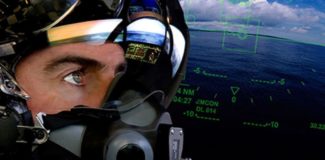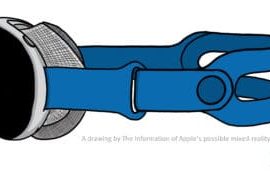In an interview with aviation magazine Hush-Kit, an anonymous F-35 pilot complained about the field of view of the jet’s AR helmet.

The F-35 is a multi-decade project by the United States & its global military allies to replace legacy “workhorse” aircraft like the F-16, F/A-18, and Harrier with a high tech multi-role stealth fighter with three variants.
AR helmets have been added to some previous fighter jets in mid-life upgrades, but F-35 was designed with it in mind from the start. As well as overlaying icons for friendly & enemy vehicles, the helmet can fuse the input from the six high resolution infrared (IR) sensors embedded in the aircraft, allowing the pilot to look through the airframe, or see in IR at night. All for the low price of $400,000.
The F-35 is the first modern fighter jet without a physical heads-up-display (HUD) in front of the pilot – the helmet overlays a 360° virtual HUD instead.
But according to the pilot Hush-Kit interviewed, the helmet’s AR field of view isn’t as wide as it needs to be:
“The technology of the helmet is great, but I’d take a HUD any day. It all comes down to physics – you can only shrink things so much before they start to become degraded, and HUDs have bigger optics than helmets…currently.“
While the pilot doesn’t use the phrase field of view – most people still aren’t familiar with it – it’s obvious that’s what’s meant by “bigger optics”, and the same issue is mentioned again at the end of the interview:
“The sheer amount of situational awareness I gain from this aircraft and its displays is like nothing I’ve experienced before. The off-boresight helmet is much more accurate than legacy JHMCS systems and I find it clearer to read (although I still want a wide-angle HUD for flight and fight-critical data!).“
The narrow field of view is the main flaw with almost all augmented reality technology today. Tech giants & optics suppliers are investing billions of dollars in the aim of inventing new optical & display technologies to overcome this, but there’s no clear answer yet.
Collins Aerospace, the contractor for the helmet, lists the field of view on its website as 30°x40°. That’s roughly the same as Microsoft’s HoloLens 2 and Magic Leap One.

Theoretically, it’s already possible to get a wider field of view in a helmet form factor. Leap Motion’s helmet-sized Project North Star platform claims a 100 degree field of view. Keep in mind though the F-35’s helmet must be able to operate continuously in almost any environment, including under heavy g-forces and even after the aircraft takes some damage. Technologies deployed in the military also need to go through years of verification.
Still, if a $400,000 helmet can’t achieve a wide field of view, this might suggest the consumer AR glasses we all want are much further out than some of the hype suggests.





